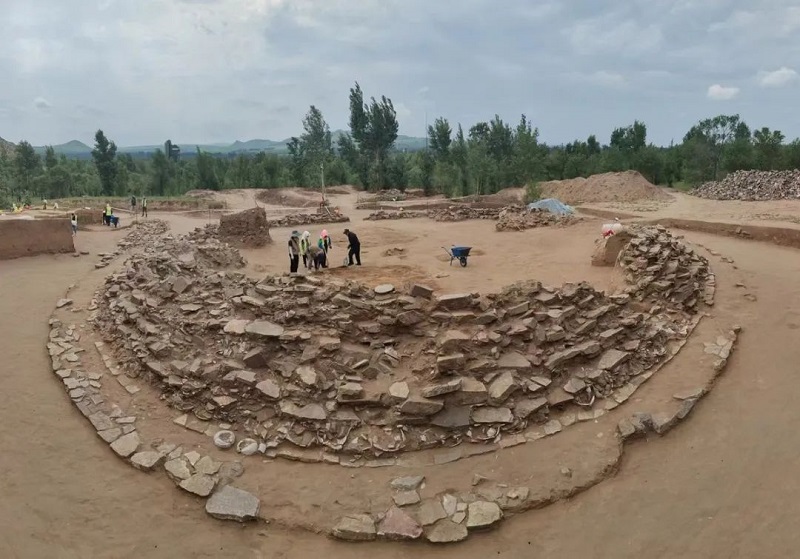Three jade dragons of different colors and sizes, and each around 5,000 years old, were among the more than 100 jade relics of the Hongshan Culture recently unearthed in North China's Inner Mongolia autonomous region.
The jade artifacts, found at the Yuanbaoshan archaeological site in Aohan Banner in the city of Chifeng during a four-month excavation work that began in May, include a palm-size, emerald green dragon that is the largest of its kind unearthed in northern China.The biggest jade dragon among these artifacts is 15.8 centimeters long, 9.5 cm wide and 3 cm thick. It is slightly longer than the one previously unearthed about 150 kilometers away at the Niuheliang archaeological site in Chaoyang, Liaoning province.The chubby, pig-headed dragons are iconic figures of the Hongshan Culture, which was an important part of the Neolithic period and encompassed present-day Inner Mongolia as well as Liaoning and Hebei provinces.Dating back 5,000 to 6,500 years, Hongshan Culture sites help form a relatively comprehensive picture regarding the origins of Chinese civilization.
The relics of the Hongshan Culture have attracted the attention of Chinese and foreign scholars since the beginning of the 20th century. At that time, they focused mainly on sites in a hilly area in suburban Chifeng called Hongshan, which means "red mountains".In 1954, archaeologist and historian Yin Da (1906-83) took the advice of archaeologist Liang Siyong (1904-54) and officially named this Neolithic culture after the area in his book on the Neolithic period in China.So far, more than 1,100 Hongshan Culture sites have been discovered, mostly in the West Liaohe River basin in southeastern Inner Mongolia and western Liaoning.Archaeological and research efforts spanning a century have unraveled some mysteries of the Hongshan Culture, represented by its sacrificial system. A well-laid ritual complex unearthed at the Niuheliang site, comprising an altar, a temple for a goddess and rubble mound tombs, as well as social stratification marked by the use of exquisite jade in sacrifice, showcased the system.At the Yuanbaoshan site, which is around 5,000 to 5,100 years old, some of the unearthed jade relics were found inside and underneath the walls of a round rubble mound tomb, 23.5 meters in diameter, which is the largest discovered in Inner Mongolia to date.










